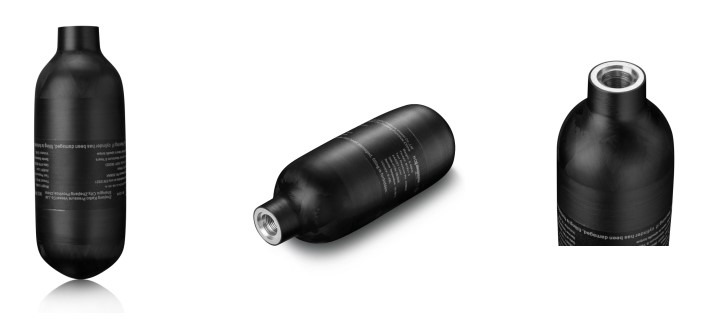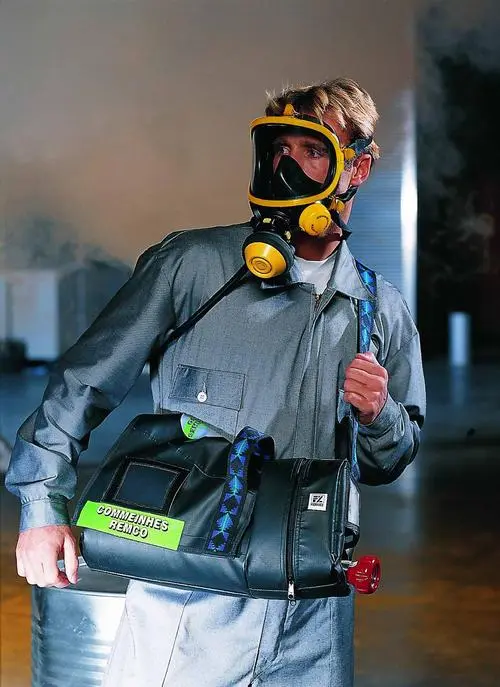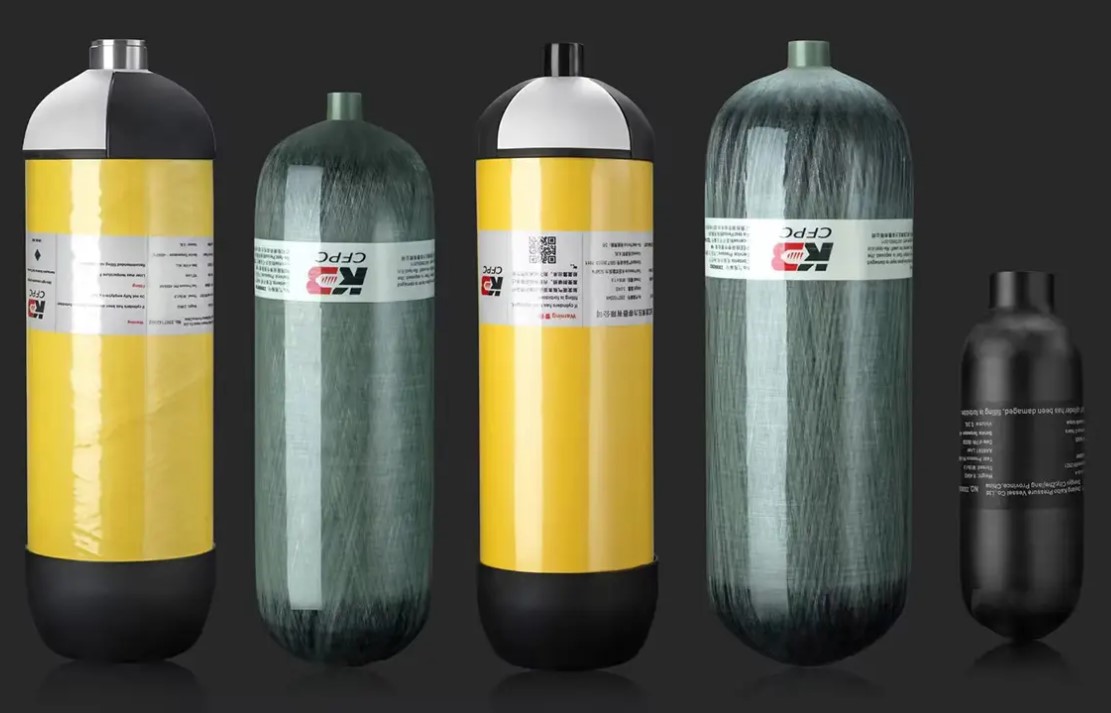An Emergency Escape Breathing Device (EEBD) is a critical piece of safety equipment designed for use in environments where the atmosphere has become hazardous, posing an immediate risk to life or health. These devices are commonly used in scenarios where there is a sudden release of toxic gases, smoke, or oxygen deficiency, providing the wearer with enough breathable air to safely escape the dangerous area.
EEBDs are found in various industries, including shipping, mining, manufacturing, and emergency services, and are designed to offer short-term protection for individuals escaping from a hazardous environment rather than for prolonged use. While not intended for firefighting or rescue operations, EEBDs are an essential safety tool that can prevent suffocation or poisoning when every second counts. A key component of modern EEBDs is the carbon fiber composite cylinder, which plays a significant role in making the devices lightweight, durable, and reliable in emergency situations.
How an EEBD Works
An EEBD is essentially a compact breathing apparatus that provides the user with a supply of breathable air or oxygen for a limited period, typically between 5 to 15 minutes, depending on the model. The device is simple to operate, even under stress, and is often activated by pulling a tab or opening the container. Once activated, the air or oxygen supply starts flowing to the user, either through a face mask or a mouthpiece and nose clip system, creating a seal that protects them from inhaling harmful gases or oxygen-deficient air.
Components of an EEBD
The basic components of an EEBD include:
- Breathing Cylinder: This cylinder stores the compressed air or oxygen that the user will breathe during the escape. Modern EEBDs increasingly use carbon fiber composite cylinders due to their lightweight and strength.
- Pressure Regulator: The regulator controls the flow of air or oxygen from the cylinder, ensuring that the user receives a steady supply of breathable air.
- Face Mask or Hood: The mask or hood covers the user’s face, providing a seal that keeps out hazardous gases while allowing them to breathe in the air or oxygen supplied by the EEBD.
- Harness or Strap: This secures the device to the user, allowing them to move freely while wearing the EEBD.
- Alarm System: Some EEBDs are equipped with an alarm that sounds when the air supply is running low, prompting the user to expedite their escape.
Carbon Fiber Composite Cylinders in EEBDs
One of the most critical components of an EEBD is the breathing cylinder, and the material used for this cylinder plays a major role in the overall effectiveness of the device. In many modern EEBDs, carbon fiber composite cylinders are used due to their superior properties compared to traditional materials like steel or aluminum.
Lightweight Design
One of the most significant advantages of carbon fiber composite cylinders is their lightweight design. In emergency situations, every second counts, and a lighter EEBD allows the user to move more quickly and with greater ease. Carbon fiber composites are significantly lighter than steel and aluminum while still being strong enough to contain compressed air or oxygen at high pressures. This weight reduction helps the user avoid fatigue, making it easier to carry the device during an escape.
High Durability and Strength
Carbon fiber composite cylinders are not only lightweight but also extremely strong and durable. They can withstand the high pressures needed to store enough air for a safe escape, and they are resistant to damage from impact, corrosion, and wear. This durability is essential in emergency scenarios where the device might be subjected to rough handling, high temperatures, or exposure to hazardous chemicals. The strength of carbon fiber allows the cylinder to remain intact and functional, ensuring that the user has a reliable air supply when they need it most.
Increased Capacity
Another advantage of carbon fiber composite cylinders is their ability to hold more air or oxygen in a smaller, lighter package. This increased capacity allows for longer escape times, providing users with additional minutes of breathable air to safely exit the danger zone. For instance, a carbon fiber composite cylinder might offer the same air supply as a steel cylinder but with much less bulk and weight, making it more practical for use in confined spaces or for users who need to move quickly.
Uses of EEBDs
EEBDs are commonly used in industries where workers may be exposed to hazardous atmospheres. These include:
- Maritime Industry: On ships, an EEBD is often required as part of the safety equipment. In the event of a fire or gas leak, crew members can use the EEBD to escape from engine rooms or other confined spaces where the atmosphere becomes dangerous.
- Mining: Mines are notorious for dangerous gases and oxygen-depleted environments. An EEBD provides miners with a quick and portable means of escape if the air becomes unsafe to breathe.
- Industrial Plants: Factories and plants that work with hazardous chemicals or processes may require workers to use EEBDs if a gas leak or explosion occurs, leading to a toxic atmosphere.
- Aviation: Some aircraft carry EEBDs to protect crew members and passengers from smoke inhalation or oxygen deficiency in the event of an emergency on board.
- Oil and Gas Industry: Workers in oil refineries or offshore drilling platforms often rely on EEBDs as part of their personal protective equipment to escape from gas leaks or fires.
EEBD vs. SCBA
It is essential to understand the difference between an EEBD and a Self-Contained Breathing Apparatus (SCBA). While both devices provide breathable air in hazardous atmospheres, they are designed for different purposes:
- EEBD: The primary function of an EEBD is to provide a short-term air supply for escape purposes. It is not designed for long-duration use and is typically employed for quick evacuations from toxic or oxygen-deficient environments. EEBDs are generally smaller, lighter, and more straightforward to operate than SCBAs.
- SCBA: SCBA, on the other hand, is used for longer-duration operations, such as firefighting or rescue missions. SCBA systems offer a more substantial air supply, often lasting up to an hour, and are designed for use in extended hazardous situations. SCBAs are typically bulkier and more complex than EEBDs and include advanced features like pressure gauges, alarms, and adjustable regulators.
Maintenance and Inspection of EEBDs
To ensure that an EEBD is ready for use in an emergency, regular maintenance and inspection are critical. Some of the key maintenance tasks include:
- Regular Inspections: EEBDs should be inspected periodically to check for any signs of wear or damage, particularly in the face mask, harness, and cylinder.
- Hydrostatic Testing: Carbon fiber composite cylinders must undergo hydrostatic testing at regular intervals to ensure that they can still withstand the high pressures needed to store air or oxygen. This testing involves filling the cylinder with water and pressurizing it to check for leaks or weaknesses.
- Proper Storage: EEBDs should be stored in a clean, dry place away from direct sunlight or extreme temperatures. Improper storage can reduce the lifespan of the device and compromise its performance.
Conclusion
An Emergency Escape Breathing Device (EEBD) is an essential safety tool in industries where hazardous atmospheres can arise unexpectedly. The device provides a short-term supply of breathable air, allowing workers to escape dangerous environments quickly and safely. With the integration of carbon fiber composite cylinders, EEBDs have become lighter, more durable, and more reliable, enhancing their effectiveness in emergency situations. Proper maintenance and regular inspections ensure that these devices are always ready to perform their life-saving function when needed.
Post time: Aug-27-2024



